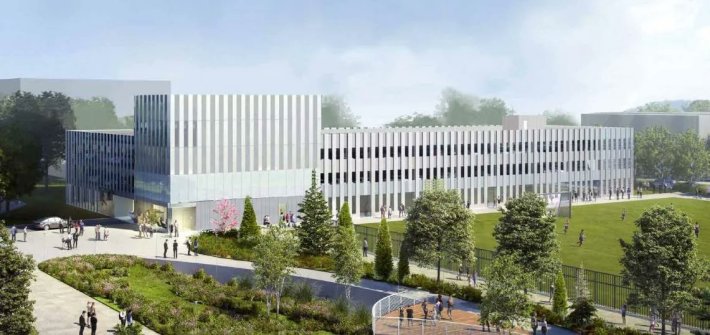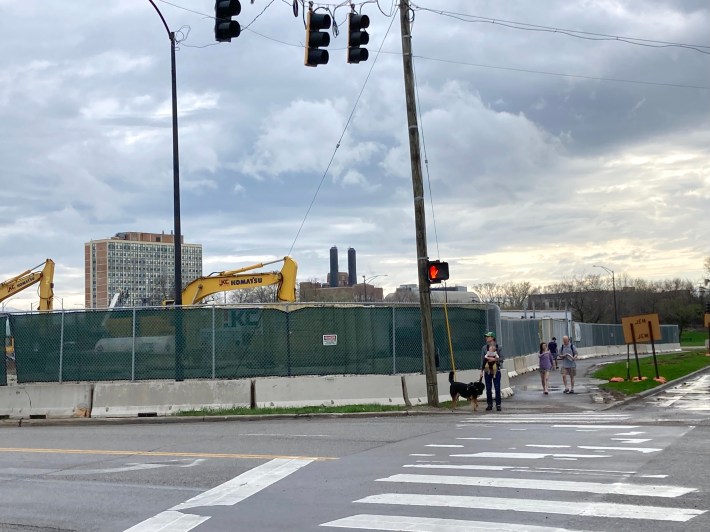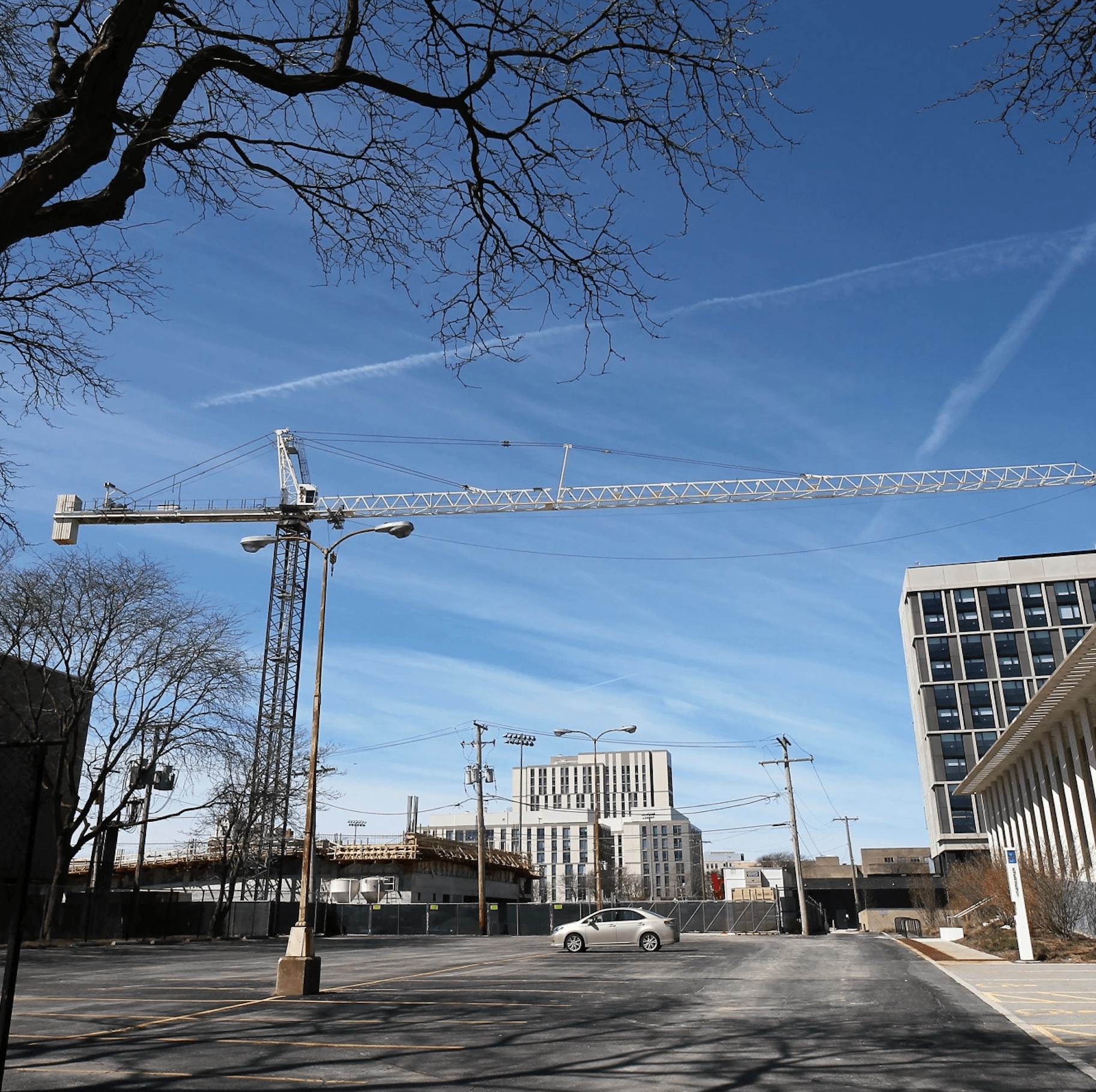There are so many opportunities for universities to be a force of good in the world and in their communities. On the flip side, there’s plenty of potential for universities to detract from the areas they’re situated in. The University of Chicago, mostly located in the Hyde Park neighborhood, recently broke ground on a massive parking structure at 61st Street and Kimbark Avenue in the Woodlawn community, just south of Hyde Park. The four-story garage will have space for more than 320 vehicles. For an institution of higher learning supposedly committed to environmental sustainability, this decision to encourage auto use is puzzling.
When I first moved to Chicago I lived in the Kenwood neighborhood, to the north of Hyde Park. I often found bus travel within the community and to neighboring areas frustrating. When the Divvy bike-share system was introduced, I could have used the blue bikes for getting me back and forth from the grocery store but I didn’t feel comfortable using a bike for transportation at the time. There were many times I hopped in my car for trips that were under two miles, and a few times I was on a bus full of people sitting in traffic along Hyde Park Boulevard.

My point is, despite all the resources within Hyde Park, residents and visitors still have to carefully plan their trips around transit schedules. Upscale new developments in the neighborhood, many of them located close to Metra Electric District stations, have included plenty of parking, which encourages new residents to bring cars to the neighborhood, which means more traffic and less efficient bus service.
I have been puzzled for a number of years as to why the University of Chicago doesn’t use its influence more often to advocate for transit improvements within Hyde Park. The school's sustainability plan has a goal of reducing transportation-based emissions and developing recommendations for sustainable campus transportation. I hope the university will advocate for bus lanes, and more transit service in the area, which can help transport their students, faculty, and staff to and from campus more efficiently. Protected bike lanes and traffic calming should also be installed throughout Hyde Park to encourage more bike-based transportation.

The university could even fund some transit-oriented developments, with a generous number of affordable units to help prevent housing displacement as the neighborhood gentrifies. That's an increasing concern now that work has begun on the Obama Presidential Center.
I will give the U. of C. some credit for reducing auto use between 2004 and 2014. In its sustainability report, the university cites a reduction in auto use by students, faculty, and staff. Student bus use increased from 11 percent to 37 percent and faculty and staff bus use increased from 2 percent to 17 percent. The percentage of students walking to campus increased from 18 percent to 28 percent. Single-occupancy car use to reach campus decreased from 52 percent to 10 percent among students and 63 percent to 38 percent in faculty and staff.

The university credits the reduction in auto use to a downpayment assistance program that helped faculty and staff purchase homes closer to campus; free transportation on CTA bus routes 171 and 172; a bike-sharing program with Blackstone bikes from 2010-2015; university shuttle service; and the Divvy system. I would be interested in knowing more about the thought process that led the university to build another parking garage during a time we should be significantly reducing auto use. Let’s hope the university’s future transportation sustainability plan and implementation do even more to reduce auto use among its immediate community and the South Side in general.





